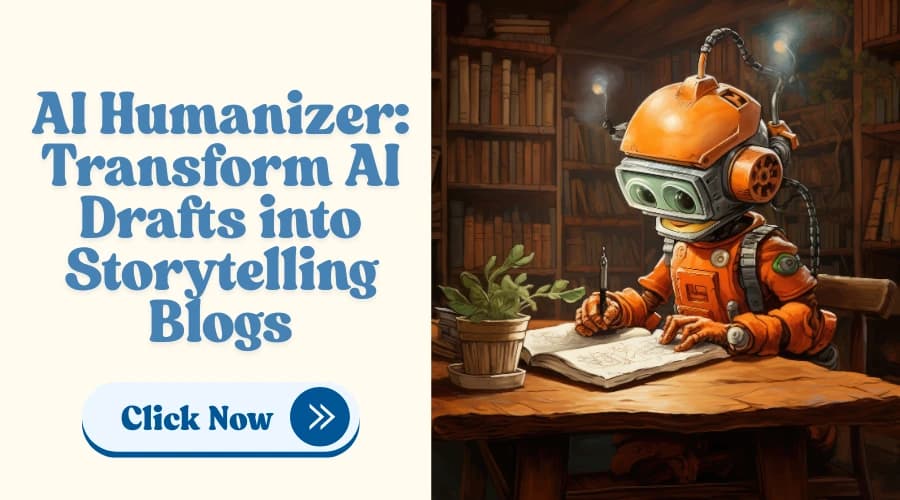AI content was supposed to be our secret weapon. It promised speed, scale, and consistency, everything agencies dream of. At first, we were impressed. Blog drafts would generate in minutes, briefs turned into full articles instantly, and we started imagining how many more clients we could serve. But reality hit soon after.
These drafts weren’t ready. The tone felt off, too stiff or generic. Transitions were choppy, and conclusions sounded robotic. Worse still, the pieces didn’t capture our clients’ voices or resonate with real readers. They felt flat, mechanical, and lifeless.
Each AI-generated blog still needed 30-45 minutes of editing to sound natural. We weren’t saving time; we were shifting it around. Our writers became full-time editors, and the creative spark began to fade. What seemed like a shortcut ended up creating hidden extra work. We needed a fix before scaling turned into chaos.
The Breaking Point
Our monthly review was a wake-up call. Over 30 hours a month, nearly a full workweek, were spent just making AI-generated blogs sound human. That wasn’t strategy, idea generation, or client collaboration. It was pure cleanup.
We scrambled to meet deadlines, worked late on revisions, and still got client feedback like “this doesn’t feel quite right” or “can we make it sound less robotic?” Meanwhile, AI checker tools like Turnitin, GPTZero, and ZeroGPT kept flagging content we thought was polished. Our editors felt stuck on a never-ending treadmill.
This wasn’t what we signed up for. Instead of growing, we were trapped in a cycle of generate → edit → hope it passes AI detection. Something had to change. To keep up with rising content demands and maintain quality, we needed a real, scalable solution.
What We Tried Before
We didn’t jump into tools blindly. We tried hard. We hired extra freelancers, hoping humans could fix what AI couldn’t. But consistency dropped. Every editor had a different style, and revisions dragged on.
Next, we tried detailed templates and tone guides, hoping they’d help. But AI ignored them. One blog sounded like a technical manual; the next, a casual journal entry. Still robotic, still off-brand.
We even tested rewriters and paraphrasing apps. They swapped words but didn’t improve flow, tone, or clarity. Some rewrites were worse than the originals. Plus, they gave no insight into what changed or if the content would pass AI checks.
No tool met our real need: humanizing AI content while keeping meaning, reflecting brand voice, and passing AI detection. Everything else felt like a patch. We needed a proper fix.
How AI Humanizer Pro Changed the Workflow
Then came AI Humanizer Pro. Not just another AI tool, it was built to solve our problem. We added it to our blog process, and everything changed.
Instead of rewriting drafts from scratch, editors used AI Humanizer to turn AI drafts into polished, natural-sounding articles. The tool kept the original meaning but added natural touches, varied sentence structures, and emotion, rhythm, which made the content come alive.
Even better, it lets us customize tone (formal, casual, academic), style (conversational or standard), and length (shorten or expand). We could perfectly match each client’s brand voice, something generic AI just can’t do.
For sensitive projects, we used the Zero AI Mode to fly under AI checkers like Originality 3.0 and Turnitin. Plus, real-time AI detection tests showed instantly if content would pass, no guessing, no redo.
Now, editors review drafts instead of fixing them. Editing time dropped dramatically, and stress went down too.
The Outcome
The results spoke for themselves. In just one month, we saved over 30 hours on blog production. Multiply that over a year, and that’s almost 400 hours reclaimed. That’s the equivalent of 10 extra workweeks, time we could now spend on strategy, ideation, and expansion.
Blog quality improved instantly. Clients began praising the natural tone and clarity. AI checker issues vanished. And our editorial team? They were finally free from the soul-crushing cycle of editing robotic drafts. Instead, they focused on final tweaks, storytelling elements, and creative polish.
With word count tracking, download options, and a full user dashboard showing preferences and history, everything was easier to manage. We even provided AI Detection Reports as part of our content delivery, something clients loved, especially in academic or sensitive niches.
The tool didn’t replace our team; it amplified them. And most importantly, it lets us scale content production without sacrificing quality or voice.
What This Means for Agencies
If your agency is leaning on AI tools to meet growing content demands and struggling to humanize AI text, you’re not alone. What feels like a shortcut often becomes a time trap. You think you're saving hours, but you're losing them in revisions, rewrites, and client complaints.
AI Humanizer Pro is built to close that gap. It’s not just an editor, it’s a workflow optimizer. It humanizes AI content without losing meaning, helps you customize tone and structure, and clears AI checker flags in real-time. Whether you're working with academic clients, B2B brands, or fast-paced e-commerce blogs, this tool adapts.
You don’t need to choose between speed and quality anymore. And you certainly don’t need to burn out your team trying to keep up. Automating the humanization of AI content is no longer optional; it’s the smart move.
The bottom line? If you’re serious about scaling content at an agency level, AI-to-human text workflows need to be efficient, reliable, and scalable. Humanizing AI made that possible for us, and it can for you, too.
Want to free your team from endless AI edits? Try AI Humanizer Pro and scale smarter. Because your time should go into strategy, not sentence surgery.






